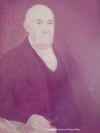 |
Oliver Culver
(1778-1867) was
elected the first town Supervisor of the Town of Brighton (1814-1816) at a meeting
in Orringh Stone's tavern in 1814. He was also a boat builder and owned
a construction company which cleared the land to make one of the most
famous roads in the area in 1806, the old Pittsford road, later renamed East
Avenue. In 1822 he got into the canal boat business, building the
first canal packet boat in the area west of Palmyra, the fourth canal
boat launched anywhere on the Erie Canal. His home is a landmark and was in the family for 129 years. It
was originally located on East Avenue but was moved to 70 East Boulevard
where you can still see it today. Oliver was also elected Brighton
Supervisor two other times, (1838-1841 and (1844). Oliver Culver is buried in Mt. Hope
Cemetery near the old 1862 chapel.
|
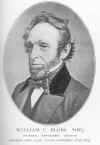
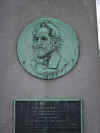
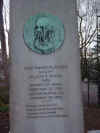 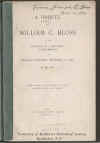
|
William Clough
Bloss (1795-1863) Bloss, was a Methodist, an early advocate of
temperance, and a supporter of the anti-slavery movement. In 1834, he
started a bi-weekly newspaper, The Rights of Man, and became
nationally known. His
home on East Avenue, where the Cutler Building now stands, was a stop on
the Underground Railroad. He
served in the NY State Assembly from 1845-47. In the late
1840's he was active in the women's suffrage movement and the
admission of African-American children to Rochester schools.
To see larger images of the beautiful Bloss monument with bronze bas relief
of William Clough on the front and his wife Mary Bangs Blossom on the
opposite side, click on the photos to the left. The monument is located at the entrance
to the
Brighton Cemetery. The text under the relief of William reads:
"William Clough Bloss
Born at West Stockbridge, Mass. January 19, 1795
Died at Rochester. April 18, 1863
A Tribute to the People
In 1826 being convinced that the use of spirituous liquors was an evil,
he emptied the contents of the bar of his tavern into the canal near
this site. He was instrumental in establishing a Temperance Society in
every town in this country. He was the promoter of the Free School Law.
He was one of the originators of the Anti Slavery Movement, and in 1834
he published one of the first Anti Slavery Papers 'The Rights of Man.'
In 1838 he advocated the ballot for women. In 1845, while a
representative at Albany, in rebuke of the caste prejudice of the day,
he left his seat among the Whites at a communion service, and seating
himself with the separated Blacks, partook of the sacrament with
them. In 1856 he supplemented the presentation of a rifle to each member
of the Massachusetts Colonists en route to Kansas, by the gift of a
Bible and Spelling Book 'To establish civil and religious liberty in
Kansas.' In 1856 during the Fremont Campaign, he originated and
circulated a Map showing the area and aggressions of the Slave power,
which was so unanswerable an argument as to be excluded from the
southern mails. He favored unrestricted immigration. For years he was a
self appointed Chaplain of the county jail, his ministry to the needy,
the destitute, and the helpless, continued throughout his life. A
thinker in advance of his age, an orator on whose lips the people hung,
he boldly championed unpopular truths, consecrating his gifts to God and
humanity."
To view a larger image of the tribute booklet to William
Clough Bloss, by his son Joseph who had the monument erected at the
Brighton cemetery, click on the booklet. It reads "A Tribute
to William C. Bloss at the unveiling of a monument to his memory at
Brighton Cemetery, September 22, 1893, by his son. At the request of
absent friends, the scene is described and the words repeated." The booklet was published in 1893 by the Post Express
Printing Company in Rochester, New York.
|
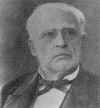 |
Captain
Enos Stone Sr. (1743-1815) and his wife Sarah,
who were from Lennox, Massachusetts, purchased a large tract of Brighton
Township #13 from Phelps & Gorham in 1789. He gave each of his
three sons, Orringh, Elvah and Enos Jr., a part of this land in Genesee
Country. He was elected the second
Town Clerk of Brighton in 1816, succeeding Nehemiah Hopkins. When his wife
Sarah died, he moved in with his son Enos Jr., whose land was located on
the east side of the Genesee River between Main & Court St. Captain
Enos Stone is buried with his Son Enos Jr., near Col. Nathaniel
Rochester, in Mt. Hope Cemetery. |
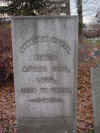  |
Orringh Stone built a log cabin and tavern where the Stone-Tolan house is today in
ca.1792, opposite
the Indian Council Rock, where two main Indian trails met. One trail
was from the Indian landing at Irondequoit Creek and the other from
Canandaigua. This, the first tavern between Canandaigua and the
Genesee Falls, became a popular place to break a long journey, get a
good meal, refreshments, and comfortable place to stay overnight. In 1805
Orringh Stone, Oliver Culver and others cut a four
mile road, two rods wide from his tavern, to extend the Canandaigua
trail to the Genesee River. On April 5, 1814 residents of Brighton held the first town
meeting at Stone’s Tavern where Oliver Culver was elected the
first town supervisor, Nehemiah Hopkins the Town Clerk, and Orringh Stone,
Assessor. The Stone Tavern, in the rear of the house, was a frequent stop for many
pioneers and famous visitors heading west, including in 1797 Louis Phillippe
who became
King of France, Revolutionary War hero General Lafayette in 1824, and Aaron Burr.
Burr became Vice President of the U.S. (1801-1805) and killed Alexander
Hamilton in a famous duel. Orringh Stone is buried in the Brighton
Cemetery. |
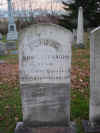 |
Enos Blossom
(1779-1830) Built a home in 1799 near the intersection of East Avenue and Landing Road. He was appointed
School Commissioner in 1801, and
was one
of the founders of the Allen's Creek school. In 1814 he was elected the
Brighton constable, the first police officer. His daughter, Eliza, married Marshfield Parsons.
They had a son, Col. Bloss Parsons, who built a beautiful brick home on
90 acres of land at East Ave. and Elmwood, where he raised sheep. He
eventually sold this property to the Country Club of Rochester who used
the home as its first clubhouse and the sheep pastures as the golf
fairways. Enos Blossom is buried in the Brighton Cemetery.
|
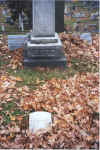 |
Gideon Cobb
(1791-1864) Early Brighton pioneer who started the first public
conveyance in the area in 1813. It consisted of a team of oxen
with cart, hauling either passengers or freight, twice a week from
the Indian landing at Irondequoit Creek to the mouth of the river. He
cleared trees and stumps to make many of the early roads in the area like North
Ave. (now Winton Road), State St. and Monroe Ave. He discovered large
deposits of clay and sand while clearing Monroe Avenue and started the
first brick factory around 1820, called the Monroe Brickyards, later
becoming the
Rochester Brick & Tile Company. He owned much land along Monroe
Avenue including the famous Cobb's Hill named after him. You can
still view some original brick made by the Monroe brickyards by driving
by the home of James Cobb, Gideon's son, at 1100 Highland Avenue. Gideon
Cobb is buried in Mt. Hope Cemetery.
|
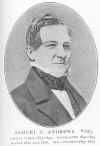 |
Samuel
G.
Andrews- (1797-1863) was the elected the 7th Brighton Supervisor
serving from 1829-1831. His father was Samuel J. Andrews, a
miller, who in 1814 purchased from Augustus Porter, a large tract of
land, together with his brother-in-law, Moses Atwater, on the east side
of the Genesee river near the main falls. Samuel G., his son, became
very active in politics. After Monroe County was formed he
became active County politics. He held a number of offices: Monroe
County Clerk 1835-1837, Postmaster of Rochester 1841-44, 6th
Mayor of Rochester in 1840, again in 1856, and Congressional
representative 1857-59. He was also a real estate promoter of his
father's Atwater-Andrews Tract. Samuel G. Andrews is buried in Mt. Hope
Cemetery. |
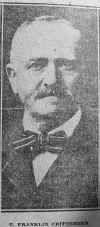 |
T.
Franklin Crittenden
(1838-1912) The Crittendens were among the earliest pioneers
owning a good portion of West Brighton. Chauncey Crittenden, T.
Franklin's grandfather, built the original Crittenden homestead in 1815
. T. F's parents were Austin and Sarah Crittenden who built
a large home at 1600 Crittenden Road. T. F. grew up on his father's
dairy farm in Brighton, and at the age of 20 started a business raising and
shipping livestock for the meat packing industry. His brother, C. S. Crittenden, joined him in 1881
and they built a slaughterhouse at 290 Exchange Street in Rochester to
provide dressed meat for the wholesale market. In 1909 their company was
incorporated
as F. & C. Crittenden & Co. The Crittendens were friends
and business associates of G. F. Swift, of the firm of Swift &
Company, of Chicago, Ill. F&C Crittenden & Company was one of the largest
suppliers of prime dressed beef, mutton, veal, pork, ham, etc. to
western cities. The Crittenden brothers each have beautiful stained glass
mausoleums you can visit in Mt. Hope Cemetery, located just inside the
entrance across from the Distillery restaurant, and around the corner to
the right.
|
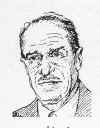  |
Arch Merrill
was a
talented newspaper man with a love of Genesee country and a knack for
telling a great story . He wrote many articles on the area which
appeared in his column in the Democrat & Chronicle along with a number of
books which were published. One of his most interesting books is
entitled A River Ramble, Saga of the Genesee Valley, a fascinating story
about his search for the source of the Genesee river in Gold,
Pa. For more information about Arch Merrill click on this link  . .
Arch Merrill is buried in the Brighton Cemetery. His grave is
maintained by a woman from Germany who after arriving in Rochester read
the above book and actually retraced the route of the Genesee. She had
many interesting experiences on the journey and is forever grateful to
Mr. Merrill.
|